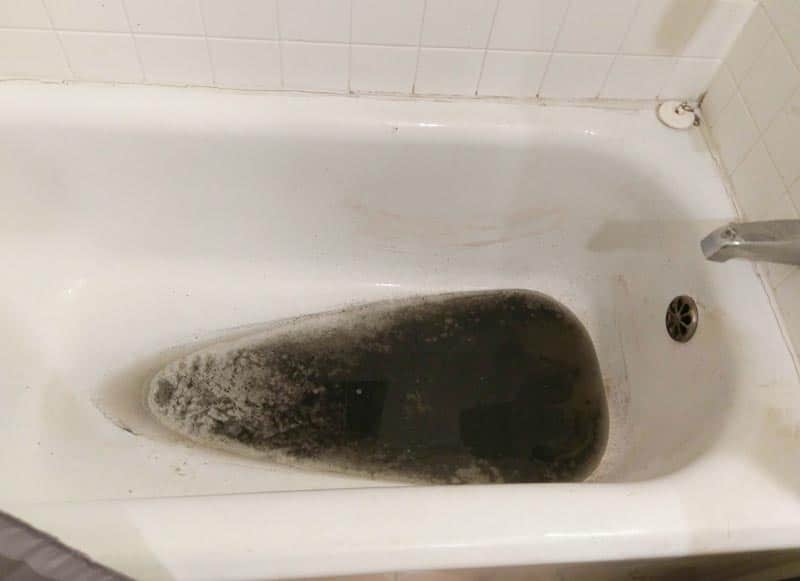Best Reasons for Drainage Coming Up in the Bathtub
Best Reasons for Drainage Coming Up in the Bathtub
Blog Article
Are you currently on the lookout for critical information involving What To Do If Sewage Starts Backing Up Into the Shower?

Sewer backup in the bathtub can be a stressful and unhygienic issue for any house owner. Not just is it troublesome, but it additionally presents major wellness dangers and shows underlying problems with the plumbing system. Understanding why sewage is showing up with the tub is important for taking proper activity to deal with the trouble effectively.
Introduction to the Concern
Typical Factors for Sewer Back-up
Blockages in the Drain Line
Among the most common sources of sewage backup is a blockage in the drain line. This can happen because of the build-up of debris, grease, or international items in the pipelines, avoiding proper circulation and creating sewage to back up right into your bath tub.
Tree Root Breach
Tree roots seeking moisture and nutrients can infiltrate sewer lines with small splits or joints. With time, these origins can grow and broaden, triggering significant damage to the pipelines and resulting in sewage backup problems.
Understanding the Problem
When sewer draws back up into the bath tub, it's a clear sign of a problem with the drainage system. The wastewater that should be flowing far from your home is rather discovering its way back into your living space, which can lead to significant damage and health hazards.
Prospective Causes
A number of elements can add to sewage back-up in the tub. From obstructions in the sewage system line to concerns with the plumbing infrastructure, identifying the source is essential for discovering an option.
Aging Infrastructure
Older homes may have dated plumbing systems that are more susceptible to deterioration, splits, and degeneration. As pipelines age, they end up being a lot more vulnerable to leakages and clogs, raising the likelihood of sewage backup events.
Heavy Rainfall or Flooding
During periods of heavy rainfall or flooding, the sewer system may come to be overloaded with excess water, creating backups and overflows. This can result in sewage backing up into tubs and various other components inside the home.
Signs of Sewer Backup
Foul Odors
Undesirable smells originating from drains or components, specifically in the shower room, might show sewer backup problems. These odors are commonly solid and consistent, signifying an issue that requires immediate attention.
Slow Draining Fixtures
Bathtubs, sinks, and commodes that drain gradually or otherwise at all could be experiencing sewer back-up. If several fixtures are affected simultaneously, it's most likely that the problem originates from an usual factor, such as the main sewage system line.
Gurgling Noises
Strange gurgling or gurgling sounds coming from drains pipes when water is running elsewhere in your house are a sign of air entraped in the plumbing system. This air accumulation can arise from sewage back-up and should be checked out promptly.
Health And Wellness Risks Connected With Sewer Back-up
Contamination of Water System
Sewer backup can infect the water in your home, posturing a major health and wellness risk to you and your household. Direct exposure to polluted water can cause intestinal issues, skin infections, and other health problems.
Mold Development
Wetness from sewer back-up can develop perfect conditions for mold and mildew development in your house. Mold spores can exacerbate breathing problems and create allergies in sensitive individuals, making punctual cleanup vital.
Spread of Disease
Sewer consists of damaging bacteria, infections, and parasites that can create a variety of conditions, consisting of hepatitis, cholera, and gastroenteritis. Entering contact with sewer or contaminated surfaces places you in jeopardy of infection.
Tidying up After Sewer Back-up
Sanitation Procedures
Completely decontaminate and sterilize influenced areas after sewer back-up to eliminate unsafe germs and protect against mold development. Usage suitable cleaning products and protective gear to ensure safe and effective cleanup.
Repair of Influenced Areas
Repair any kind of damages to floor covering, walls, or fixtures triggered by sewer back-up. Relying on the level of the damages, you might require to change carpets, drywall, or various other products to recover your home to its pre-loss problem.
Immediate Actions to Take
Shutting Off Water
In case of sewage backup, it's important to switch off the water supply to stop more contamination and damage. Find the main water shutoff valve in your house and closed it off until the concern can be fixed.
Calling an Expert Plumber
Taking care of sewer backup is not a DIY job. Get in touch with a certified plumber with experience in dealing with sewage-related issues to assess the scenario and carry out essential repairs or clean-ups.
Avoiding Contact with Polluted Water
Till the sewage back-up is dealt with, prevent contact with polluted water to prevent the spread of bacteria and virus. Wear protective gear if you must be in the afflicted area and wash your hands extensively afterward.
Preventive Measures
Routine Maintenance of Drain Lines
Schedule routine evaluations and upkeep of your drain lines to recognize and resolve potential problems prior to they intensify right into significant troubles. This can consist of cleaning out particles, examining for tree root invasion, and fixing any type of broken pipes.
Installing Bayou Shutoffs
Take into consideration mounting backwater valves in your plumbing system to prevent sewage from receding right into your home during periods of heavy rainfall or flooding. These valves immediately close when water starts backing up, securing your building from contamination.
Appropriate Disposal of Home Waste
Avoid purging anything other than bathroom tissue and human waste down the commode to prevent blockages and blockages in the drain line. Dispose of oil, oil, and various other home chemicals properly to lessen the danger of plumbing issues.
Why Is Water Backing Up in My Bathtub When I Flush My Toilet?
What to do about a sewer line clog
First, don’t bother with plunging. No amount of plunging will dislodge the clog in a sewer line. The clog is too far away. Plungers are for clogs in the toilet itself, not the sewer line. Plus, the most likely causes of a sewer clog are:
Tree roots Flushed toys or feminine products Grease buildup Those items don’t move easily. And in the case of tree roots, the roots need to be cut out of the pipe and the pipe will need to be repaired.
You’ll need a closet auger. A closet auger is a type of plumber’s snake with a protective cover to keep from scratching the delicate porcelain toilet. If the clog is further down, you may need to remove the toilet or use one of your cleanouts to get to the clog.
We also recommend doing a video inspection of the drain to ensure that the cause of the clog has been completely removed. Otherwise, you could have the same problem again in a few days or weeks.
https://mspplumbingheatingair.com/blog/why-is-water-backing-up-in-my-bathtub-when-i-flush-my-toilet

I am just very fascinated with What To Do If Sewage Starts Backing Up Into the Shower and I'm hoping you liked our page. Remember to take the time to distribute this article if you liked it. Many thanks for your time spent reading it.
Call Today
Report this page